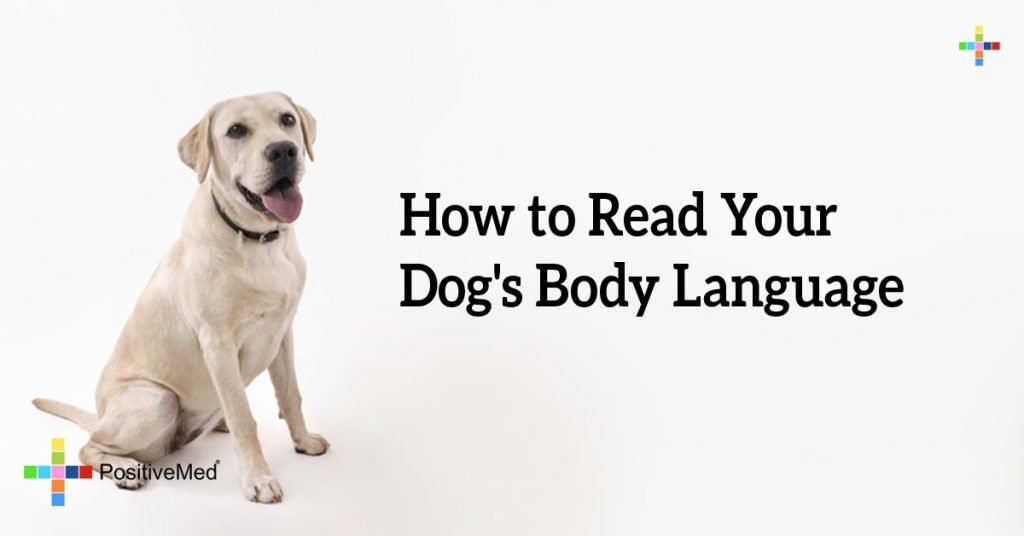
Canine body language is a great way to help owners understand what dogs are feeling, how they are handling a situation, and what they are about to do. Handed down from the body language of their lupine ancestors, the body language of dogs is easy for humans to understand.
Knowing canine body language can help avoid fearful situations and aggressive behavior, prevent dog bites, as well as how to react when situations arise.
1- Relaxed dogs do not feel threatened by other dogs or their environment. They are friendly and approachable.
Relaxed dog body language traits:
- dog standing erect on four legs
- tail hanging down straight (or in some breeds, curled upward) and wagging in a slow, sweeping motion
- mouth open, tongue out, gentle panting (but not due to heat or stress)
- ears erect and facing forward
- eyes with small pupils, no whites showing
- dog looking around, taking an interest in his surroundings, smelling and walking around

2- The playful stance, where a dog has his rump raised high, is the sign that it’s time to go out and play! Dogs also acquire this stance as a time out or as an apology or peace offering if they think they may have behaved too aggressively or threateningly.
Playful body language traits:
- rump raised, front of the body lowered, front knees bent, head forward, dog jumping around
- tail raised high and waving
- mouth open, tongue out
- ears perked up and alert
- eyes wide open, darting around in anticipation, pupils dilated


3- Stressed dogs give signals to show they are overheated, frustrated, fearful, or simply trying to deflect conflict.
Stressed dog body language traits:
- body bent forward, head down
- tail down and limp
- tongue extended forward or licking the nose, indicating being wary but not aggressive, panting extensively if overheated
- ears folded back
- eyes avoiding looking directly at anything, pupils dilated
- body crouched low, back arched, rump and head lowered, dog hiding, backing away, shivering or trembling
- tail down and twitching or between the legs
- mouth closed, lips possibly curled
- ears down or laid back
- eyes fixed on the thing scaring him, whites of the eyes showing
- dog directly facing his opponent, body in a forward lurching position, head tilted forward, hackles raised
- tail straight down and tensed or tucked under his legs
- mouth snarling, lips curled, teeth exposed
- ears back
- eyes narrowed, staring at opponent, pupils dilated
- dog standing erect and tall, hackles raised
- tail up straight and bristled
- mouth closed or lips curled and teeth visible in the prelude to a snarl
- ears erect and facing forward
- eyes staring straight ahead or on target
- dog pretending to mount (or hump) lower-ranking dogs
- dog crouching, knees bent, front paw raised, rump lowered, head down
- tail between the legs
- mouth open slightly, tongue dipping out slightly—they may lick the face of the dominant dog
- ears folded back
- eyes looking away, brief and indirect eye contact with dominant dog or person

4- Fearful dogs have unmistakable humped-over body language and a fearful gaze. Remove the dog from the fearful environment or let him calm down on his own.
Fearful body language traits:

5- Aggressive dogs give signals that they are about to attack and defend themselves. It’s best to leave these dogs alone.
Aggressive dog body language traits:

6- Dominant dogs know they are the king of the pack and make sure everyone else knows, too.
Dominant dog body language traits:

7- Submissive dogs are not necessarily wimps, just dogs who agree to recognize who the leader is and avoid confrontation.
Submissive dog body language traits:

How to Read Your Dog’s Body Language
By PositiveMed-Team
Edited By Stephanie Dawson
Sources:
Image
How to Read Your Dog’s Body Language, Modern Dog Magazine
How to Interpret Your Dog’s Body Language…, Paws Across America
Canine Body Language, ASPCA
Reading Your Dog’s Body Language, About (dot) com





